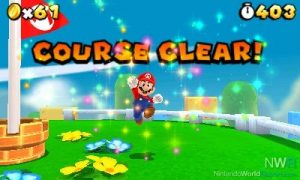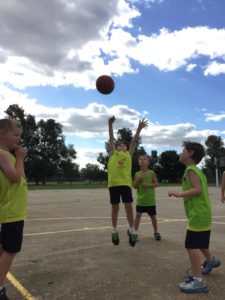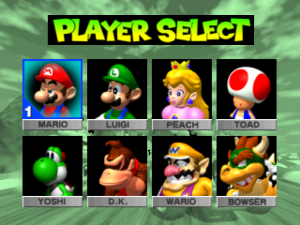Darren Anderson is Basketball Australia’s Community Basketball Manager, with extensive experience in delivering Vicinity Centres Aussie Hoops, school programs and representative programs at an association level.

The first ever video game that my brother and I played on our SNES (Super Nintendo to any non-90’s kids reading) console was Super Mario Brothers. Super Mario Bros. is the most popular video game franchise ever, selling 310 million copies globally in the past 30 years. The vast majority of Australians had an experience with the global series at some stage in their childhood with siblings, friends, or children; and that’s where I start to see clear parallels with our great game.

We are competing with technology and video games for children’s leisure time more than ever, but the factors making them so addictive and enjoyable are no different to sport. Gaming developers are clearly doing something right – but we can (and must) use these learnings to maintain an engaging and enjoyable basketball experience for the next generation.
The analogy may seem a bit of a stretch but stick with me. I often ask junior coaches “what are the common features between a great video game such as Super Mario Bros. as and a great Vicinity Centres Aussie Hoops program?”
Here’s my take:
1. You don’t need lengthy instructions or background to pick-up and play.
When someone first hands you a new game, they’ll typically say “use the joystick to move, press button B to jump” and away you go. Setting rules and context are important, but so is having a “Quick Start” to your session, as no one wants to sit and wait through lengthy introductions before commencing play.

Whether developing motion offence or teaching a player to dribble – give participants the bare essentials to start, then let them play and discover skills and tactics before adding more layers.
2. The increases in difficulty are gradual.
The new skills added at each level of progression are subtle, and whilst initially challenging, can usually be overcome within a few attempts by applying skills from the previous levels.
3. Feedback doesn’t need to be ‘on tap’ in order to learn from mistakes.
When you jumped into a hole for the first time, or your Mario Kart went off a cliff, you didn’t need a friend or coach on hand to tell you that wasn’t the right outcome!
Give participants an opportunity to learn from their own observations first, and if they make the same error several times it may be time for a helping hand. If a player of any level makes an error and looks directly at you for feedback, you’re giving too much feedback and not empowering them to critically evaluate their own performance.

4. It’s better with buddies, and the creators know that.
No matter what game you play, it’s more enjoyable to play with friends rather than simply alongside them, which is an important distinction for coaches to make.

5. There’s a sense of fanfare around mastery of a new element, with rewards built-in between.
When you pass a challenge or level in Super Mario Bros., you genuinely feel like you’ve achieved something special through the colour, sound and rewards the game provides. Importantly, there are little rewards and acknowledgements scattered along the way, recognising ‘checkpoints’ that break up complex tasks. As a coach, make the effort to recognise these checkpoints in technical, tactical and social development. For a Vicinity Centres Aussie Hooper, this may be getting closer to the ring height when shooting than the previous attempt.

You can never give enough praise and encouragement, and be sure to recognise the little wins along the way.
6. There’s ‘bosses’ to defeat along the way.
Similarly, every game includes rites of passage to reach a significant milestone, and usually involves some form of ‘boss’ to defeat.

In Vicinity Centres Aussie Hoops, this might be a variation of an activity where the coach is a player, or the ‘villain’; or a ‘Kids vs Parents’ day.
7. Surprises are thrown in periodically to keep things interesting.
If the game was bland and predictable, it would gather dust in favour of the next game very quickly. In Vicinity Centres Aussie Hoops a consistent session structure can be useful as a behaviour management technique, but be sure to keep modifying activities to refresh them, such as having a cue which changes the activity rules during play.

8. It encourages imagination.
For juniors – it may be that if a player picks up a certain colour marker on the ground during a tiggy game, they’re “invincible” and immune from being tagged. Or in a game context, that assists are worth double points for 8 seconds following a steal.
For older players – use principles of Game Sense by empowering them to use their imagination to create scenarios for game simulation activities, or create their own baseline/sideline play.

9. They allow players to customise their playing experience.
Some Mario Kart players like the acceleration of Yoshi, whilst others prefer the top speed of Donkey Kong – the game allows for this and it gives players a sense of identity within the activity. An applied example in Vicinity Centres Aussie Hoops may be letting participants choose their team name, or having participants earn 1 point during a shooting game for dribbling to create a closer shot, and two points for making the longer range shot.

Give the kids ownership of aspects of the activity, and allow them to ‘customise’ it.
10. If there’s a queue to play it in the shops, kids will lose interest fast!
Games are available to play on demand, and we need to adopt a similar mentality with youth training sessions. Having kids stand in queues benefits neither the child nor their development, and leads to behaviour management issues. It can be challenging to conduct shooting activities with 10 kids and one basket but coaches can incorporate ball-handling and multiple shooting spots to easily combat this.

Apply some of these principles to your next session and you might observe some chaos/mess to start with. This is good – the ‘perfectly executed drill’ many coaches strive for is in effect a search for an environment where learning and decision-making have stopped.
If you have any thoughts or ways that you have ‘gamified’ your sessions to engage your junior players – please share them in the comments below.




Leave a Reply